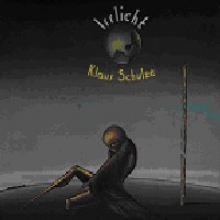MENNO VON BRUCKEN FOCK
IRRLICHT (REVISITED) (1972), heruitgave (NL+E)

Wat moet ik eigenlijk nog schrijven over Klaus Schulze, een man die aan de wieg heeft gestaan van de elektronische muziek (EM), destijds een totaal nieuwe muziekstroming? Door toedoen van ene Kaiser, destijds een ‘big shot’ in de platenbusiness kreeg de zojuist uit Tangerine Dream (TD) gestapte Schulze de kans om Irrlicht (1972), zijn eerste soloalbum het levenslicht te doen zien. Een tweedehands elektronisch orgel, een tape van een repetitie van een orkest, die hij vervolgens achterwaarts gespeeld gebruikte, en een half kapotte versterker, waren zijn mogelijkheden in 1972 om de eerste stap te zetten naar internationale erkenning van EM. De drie originele stukken zijn voornamelijk orgelakkoorden met veel effecten, bijgeluiden en geruis, zonder dat er sprake is van duidelijke melodielijnen en percussie. Dat is wel wat vreemd voor iemand die tot kort daarvoor de drumstokken hanteerde bij Ash Ra Tempel! Het orgeltje klinkt wat zweverig en soms vervormd en vooral het zeurende ‘signaal’ in Exil Sils Maria is typerend voor het psychedelische element dat in die tijd zeer in zwang was. De 24 minuten lange bonustrack zou afkomstig zijn van een concert in Reims in 1976. Het instrumentarium klinkt daarop al duidelijk moderner en uitgebreider maar de aanzet, de grondtoon met daaroverheen tal van effecten, is vergelijkbaar met de eerdere tracks. Later wordt de grondtoon aangevuld en herkennen we ook andere geluiden zoals de Moog-synthesizer. Verplichte kost mijn inziens voor alle EM-liefhebbers, net zoals de vroege albums van Kraftwerk en TD. Muzikaal gezien is Irrlicht echter geen hoogstandje, maar de durf en originaliteit maken alles goed! Het wat surrealistische artwork van Ues Amann maakt deel uit van het cd-boekje evenals de covers van onder meer Blackdance (1974), Picture Music (1975) en Timewind (1975) en die spreken mij zeer aan.
ENGLISH:
What more is there to write about Klaus Schulze, a man who stood at the cradle of the totally new elelctronic music (EM) style? Actually nothing. A a man called Kaiser, who was in those days a 'big shot' in the record business, gave Schulze the chance to record his first solo album Irrlicht after he had just left Tangerine Dream. A second-hand electronic organ, a tape of an orchestra practice - which he then used playing backwards - and a half broke amplifier were his facilities to make the first move towards international recognition of EM in 1972. The three original pieces are chiefly organ chords with a lot of effects, secondary noises and rustles, without any question of clear melody lines and percussion, something that is strange indeed for someone who until recently was handling the drumsticks with Ash Ra Tempel! The small organ sounds a little wavering and sometimes distorted and especially the whining 'signal' in Exil Sils Maria is typical of the psychedelic element that at the time was very much in vogue. The 24-minute long bonus track is alleged to come from a concert in Reims in 1976. The cabinet of instruments clearly sounds more modern already and more extensive, but the design, a fundamental tone with numerous effects around it, is comparable to the former tracks. Later on, the keynote is completed and then we also recognize other sounds like the Moog. In my opinion, this album is obligatory for all EM-lovers, just like the early albums by Kraftwerk and Tangerine Dream. Musically speaking this is no absolute all-out effort, but the daring and the originality make up for all! The somewhat surrealistic artwork by Ues Amann that is part of the booklet, just as the covers of among others Blackdance (1974), Picture Music (1975) en Timewind (1975), albums that very much appeals to me.